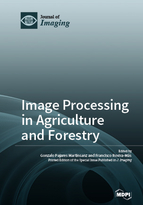Image Processing in Agriculture and Forestry
A special issue of Journal of Imaging (ISSN 2313-433X).
Deadline for manuscript submissions: closed (31 December 2016) | Viewed by 102257
Special Issue Editors
Interests: computer vision; image processing; pattern recognition; 3D image reconstruction, spatio-temporal image change detection and tracking; fusion and registering from imaging sensors; superresolution from low-resolution image sensors
Special Issues, Collections and Topics in MDPI journals
Interests: agricultural robotics and automation; intelligent vehicles; artificial intelligence; machine vision; mechatronics; control systems; autonomous navigation; stereoscopic vision; fluid power; automatic steering; off-road equipment; precision agriculture
Special Issue Information
Dear Colleagues,
Agriculture, forestry and forests are specific areas where imaging-based systems play an important role. They allow a more efficient use of resources while facilitating the realization of different tasks, which are occasionally difficult and dangerous.
Image acquisition, processing and interpretation are oriented toward the efficiency of agricultural activities.
The following is a list of the main topics covered by this Special Issue. The issue will, however, not be limited to these topics:
- Image acquisition devices and systems in outdoor environments.
- Image processing techniques: color, segmentation, texture analysis, image fusion.
- Computing vision-based approaches: pattern recognition, 3D structures and movement.
- Applications: autonomous agricultural vehicles, obstacle avoidance, crop rows detection, yield estimation and quality, plant health, trees monitoring, crown height, bark thickness, communications.
Prof. Dr. Gonzalo Pajares Martinsanz
Prof. Dr. Francisco Rovira-Más
Guest Editors
Manuscript Submission Information
Manuscripts should be submitted online at www.mdpi.com by registering and logging in to this website. Once you are registered, click here to go to the submission form. Manuscripts can be submitted until the deadline. All submissions that pass pre-check are peer-reviewed. Accepted papers will be published continuously in the journal (as soon as accepted) and will be listed together on the special issue website. Research articles, review articles as well as short communications are invited. For planned papers, a title and short abstract (about 100 words) can be sent to the Editorial Office for announcement on this website.
Submitted manuscripts should not have been published previously, nor be under consideration for publication elsewhere (except conference proceedings papers). All manuscripts are thoroughly refereed through a single-blind peer-review process. A guide for authors and other relevant information for submission of manuscripts is available on the Instructions for Authors page. Journal of Imaging is an international peer-reviewed open access monthly journal published by MDPI.
Please visit the Instructions for Authors page before submitting a manuscript. The Article Processing Charge (APC) for publication in this open access journal is 1800 CHF (Swiss Francs). Submitted papers should be well formatted and use good English. Authors may use MDPI's English editing service prior to publication or during author revisions.








